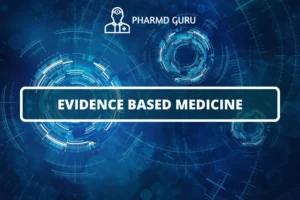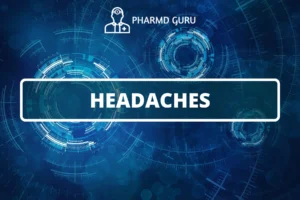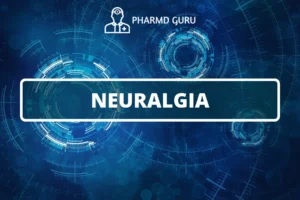Anxiety disorders are a group of mental health conditions characterized by excessive and persistent feelings of fear, worry, and apprehension. These disorders can significantly impact a person’s daily life, relationships, and overall well-being. In this article, we will explore the etiopathogenesis, or underlying causes and mechanisms, of anxiety disorders and discuss the pharmacotherapy options used in their treatment.
SCROLL DOWN TO THE BOTTOM OF THIS PAGE FOR ACTUAL NOTES.
Table of Contents
- Introduction
- Understanding Anxiety Disorders
- Types of Anxiety Disorders
- Etiopathogenesis of Anxiety Disorders
- Neurochemical Imbalances
- Genetic and Environmental Factors
- Clinical Features and Diagnosis
- Treatment Options
- Pharmacotherapy for Anxiety Disorders
- Psychotherapy and Other Non-Pharmacological Approaches
- Lifestyle Modifications
1. Introduction
Anxiety disorders are characterized by excessive and persistent feelings of fear, worry, and apprehension. These disorders can manifest in various forms, such as generalized anxiety disorder (GAD), panic disorder, social anxiety disorder (SAD), and specific phobias. Understanding the etiopathogenesis of anxiety disorders is crucial for accurate diagnosis, effective treatment, and improved outcomes.
2. Understanding Anxiety Disorders
Anxiety disorders are a group of mental health conditions characterized by intense and excessive anxiety or fear. These feelings are often accompanied by physical symptoms such as rapid heart rate, sweating, trembling, and shortness of breath. Anxiety disorders can significantly impact daily functioning, relationships, and overall quality of life.
3. Types of Anxiety Disorders
Anxiety disorders include various subtypes, such as:
- Generalized Anxiety Disorder (GAD): GAD involves persistent and excessive worry about everyday life events, often accompanied by physical symptoms such as restlessness, fatigue, difficulty concentrating, irritability, and muscle tension.
- Panic Disorder: Panic disorder is characterized by recurrent panic attacks, which are sudden and intense episodes of fear or discomfort. These attacks can be accompanied by physical symptoms such as chest pain, palpitations, shortness of breath, and a sense of impending doom.
- Social Anxiety Disorder (SAD): SAD involves an intense fear of social situations and the fear of being judged or humiliated. Individuals with SAD may avoid social interactions or experience extreme distress when exposed to such situations.
- Specific Phobias: Specific phobias involve an intense and irrational fear of a specific object, situation, or activity, such as heights, spiders, flying, or public speaking.
4. Etiopathogenesis of Anxiety Disorders
The etiopathogenesis of anxiety disorders is complex and involves a combination of factors:
5. Neurochemical Imbalances
Imbalances in neurotransmitters, particularly serotonin, norepinephrine, and gamma-aminobutyric acid (GABA), have been implicated in the development of anxiety disorders. These neurotransmitters play a crucial role in regulating mood, emotions, and the body’s stress response.
6. Genetic and Environmental Factors
There is evidence to suggest a genetic predisposition to anxiety disorders, as they can run in families. Environmental factors, such as traumatic experiences, chronic stress, and substance abuse, can also contribute to the onset or exacerbation of anxiety disorders.
7. Clinical Features and Diagnosis
Diagnosing anxiety disorders involves a thorough evaluation of symptoms, medical history, and ruling out other potential causes. Healthcare professionals use standardized diagnostic criteria, such as those outlined in the Diagnostic and Statistical Manual of Mental Disorders (DSM-5), to make an accurate diagnosis. Symptoms may include excessive worry, restlessness, irritability, difficulty concentrating, sleep disturbances, and physical symptoms like palpitations and shortness of breath.
8. Treatment Options
The treatment of anxiety disorders typically involves a combination of pharmacotherapy, psychotherapy, and lifestyle modifications. The choice of treatment depends on the specific diagnosis, severity of symptoms, individual preferences, and the presence of any comorbid conditions.
9. Pharmacotherapy for Anxiety Disorders
Pharmacotherapy plays a crucial role in the management of anxiety disorders. Medications used in the treatment of these disorders include:
- Selective Serotonin Reuptake Inhibitors (SSRIs): SSRIs, such as sertraline, fluoxetine, and escitalopram, are commonly prescribed to alleviate symptoms of anxiety disorders. They work by increasing the availability of serotonin in the brain, which helps regulate mood and reduce anxiety.
- Serotonin-Norepinephrine Reuptake Inhibitors (SNRIs): SNRIs, such as venlafaxine and duloxetine, also increase the levels of serotonin and norepinephrine in the brain, providing relief from anxiety symptoms.
- Benzodiazepines: Benzodiazepines, such as alprazolam and lorazepam, are fast-acting medications that can provide immediate relief from acute anxiety. However, they are typically prescribed for short-term use due to the potential for dependence and abuse.
- Buspirone: Buspirone is an anti-anxiety medication that works by binding to serotonin and dopamine receptors, reducing anxiety symptoms without the risk of dependence.
It is important to note that medication should be prescribed and monitored by a qualified healthcare professional, as each medication has its own benefits, side effects, and considerations.
10. Psychotherapy and Other Non-Pharmacological Approaches
Psychotherapy, such as cognitive-behavioral therapy (CBT), is a widely recognized and effective treatment for anxiety disorders. CBT helps individuals identify and modify negative thought patterns and behaviors that contribute to anxiety. Other therapeutic approaches, such as exposure therapy and relaxation techniques, can also be beneficial.
In addition to psychotherapy, lifestyle modifications, such as regular exercise, stress management techniques (e.g., mindfulness and meditation), adequate sleep, and a healthy diet, can help reduce anxiety symptoms and improve overall well-being.
11. Lifestyle Modifications
Certain lifestyle modifications can complement the treatment of anxiety disorders. These include:
- Regular Exercise: Engaging in physical activity can help reduce anxiety and improve mood by promoting the release of endorphins, which are natural mood-boosting chemicals.
- Stress Management Techniques: Practicing stress management techniques, such as deep breathing exercises, mindfulness, and relaxation techniques, can help alleviate anxiety symptoms and promote a sense of calm.
- Healthy Lifestyle: Maintaining a balanced diet, getting sufficient sleep, and avoiding excessive caffeine and alcohol consumption can contribute to overall well-being and help manage anxiety.
ACTUAL NOTES:




